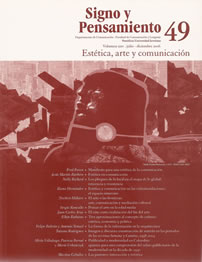Abstract
Today, art works take place in new temporalities and new territories. For instance, time speeding leads to the paradoxical wish of contemporary works of art to be inscribed in the long term of patrimony, and also to the expansion of contemporary art to localized and/or ubiquitous spaces away from art institutions. In this context, more and more domains appear that are open to cultural “mediation “. These developments provide an answer that, though linked to the expansion of the web, responds to people’s and communities’ need to participate in the creation of symbolic forms from which they had been separated by cultural industries. However, the relation between digital art and the aesthetisation process in the realm of communication, as well as the link between communication and communicability (sensus communis), can offer a new approach to the cultural mediation science. The identification of common spaces for aesthetics and communication sciences could help us to deal with these matters: creation, reception, transmission and preservation of art works in the context of a globalized communication culture.This journal is registered under a Creative Commons Attribution 4.0 International Public License. Thus, this work may be reproduced, distributed, and publicly shared in digital format, as long as the names of the authors and Pontificia Universidad Javeriana are acknowledged. Others are allowed to quote, adapt, transform, auto-archive, republish, and create based on this material, for any purpose (even commercial ones), provided the authorship is duly acknowledged, a link to the original work is provided, and it is specified if changes have been made. Pontificia Universidad Javeriana does not hold the rights of published works and the authors are solely responsible for the contents of their works; they keep the moral, intellectual, privacy, and publicity rights.
Approving the intervention of the work (review, copy-editing, translation, layout) and the following outreach, are granted through an use license and not through an assignment of rights. This means the journal and Pontificia Universidad Javeriana cannot be held responsible for any ethical malpractice by the authors. As a consequence of the protection granted by the use license, the journal is not required to publish recantations or modify information already published, unless the errata stems from the editorial management process. Publishing contents in this journal does not generate royalties for contributors.


